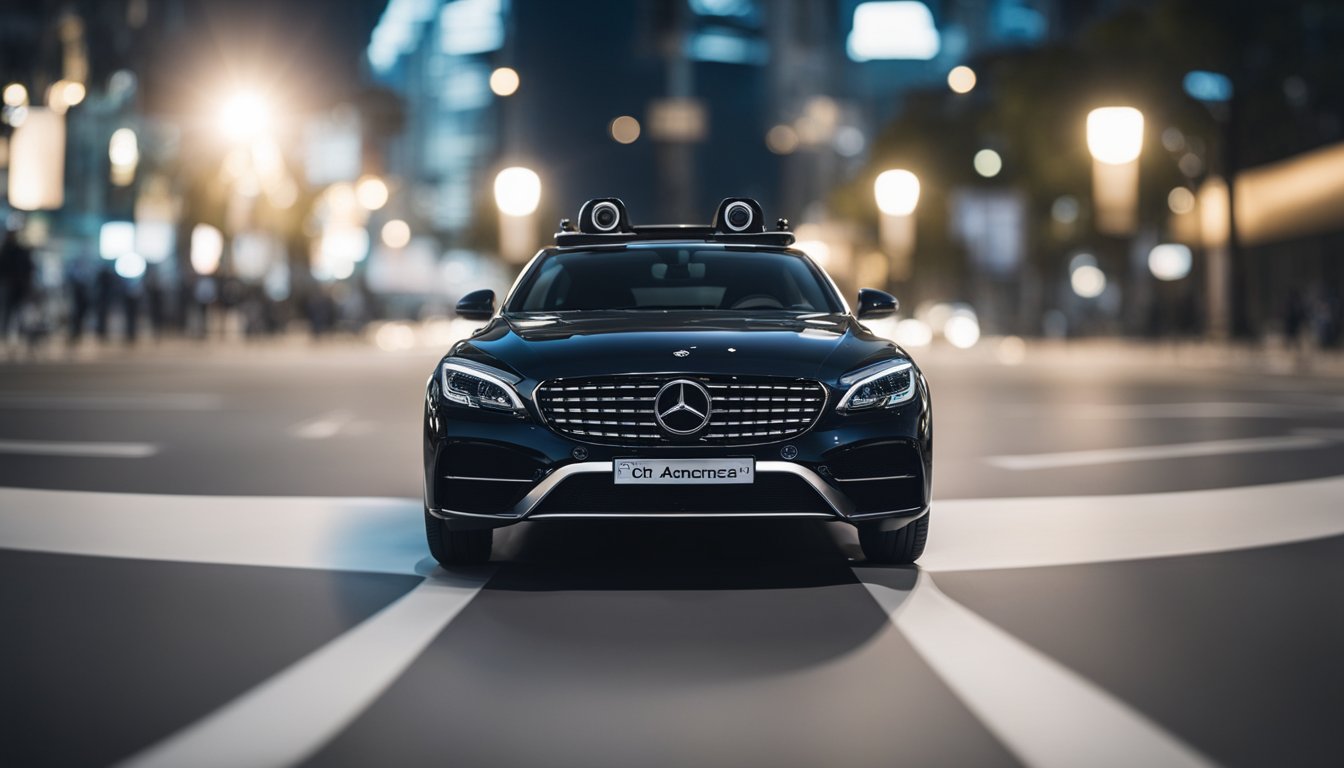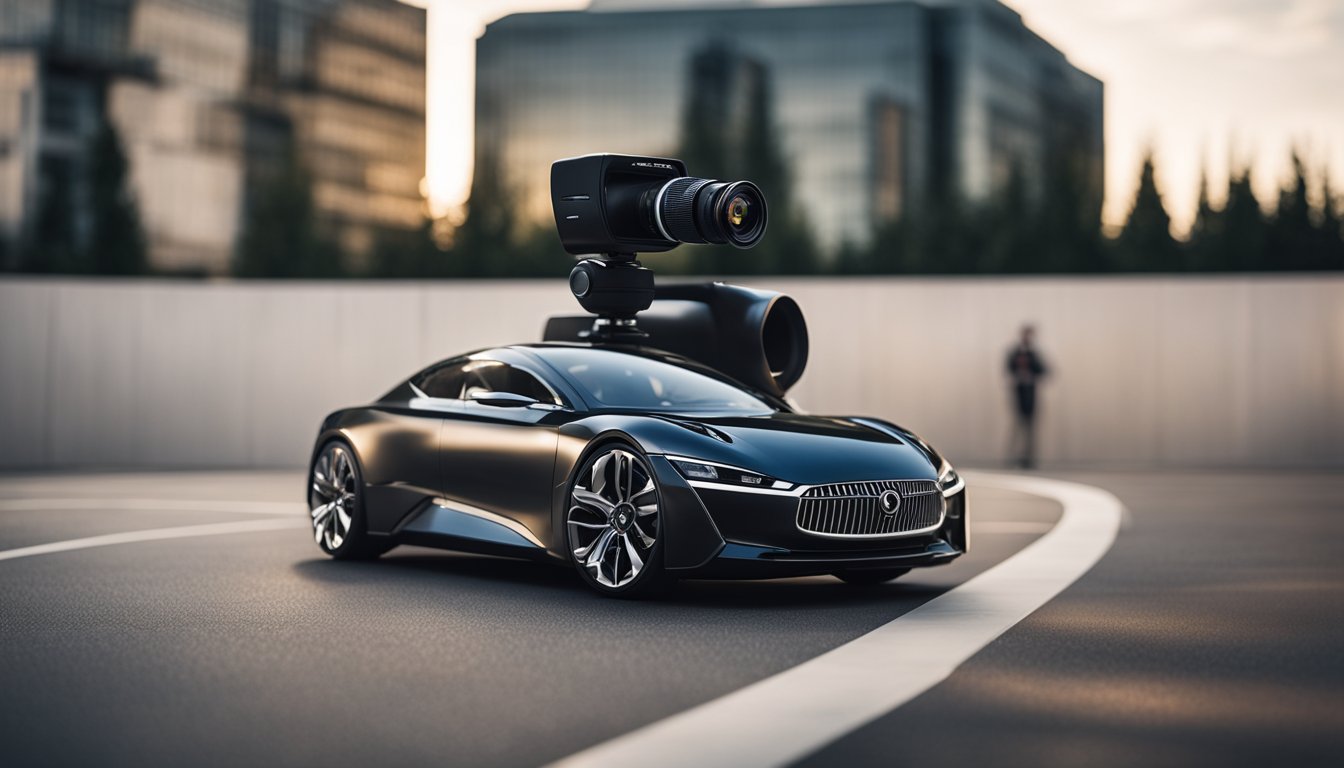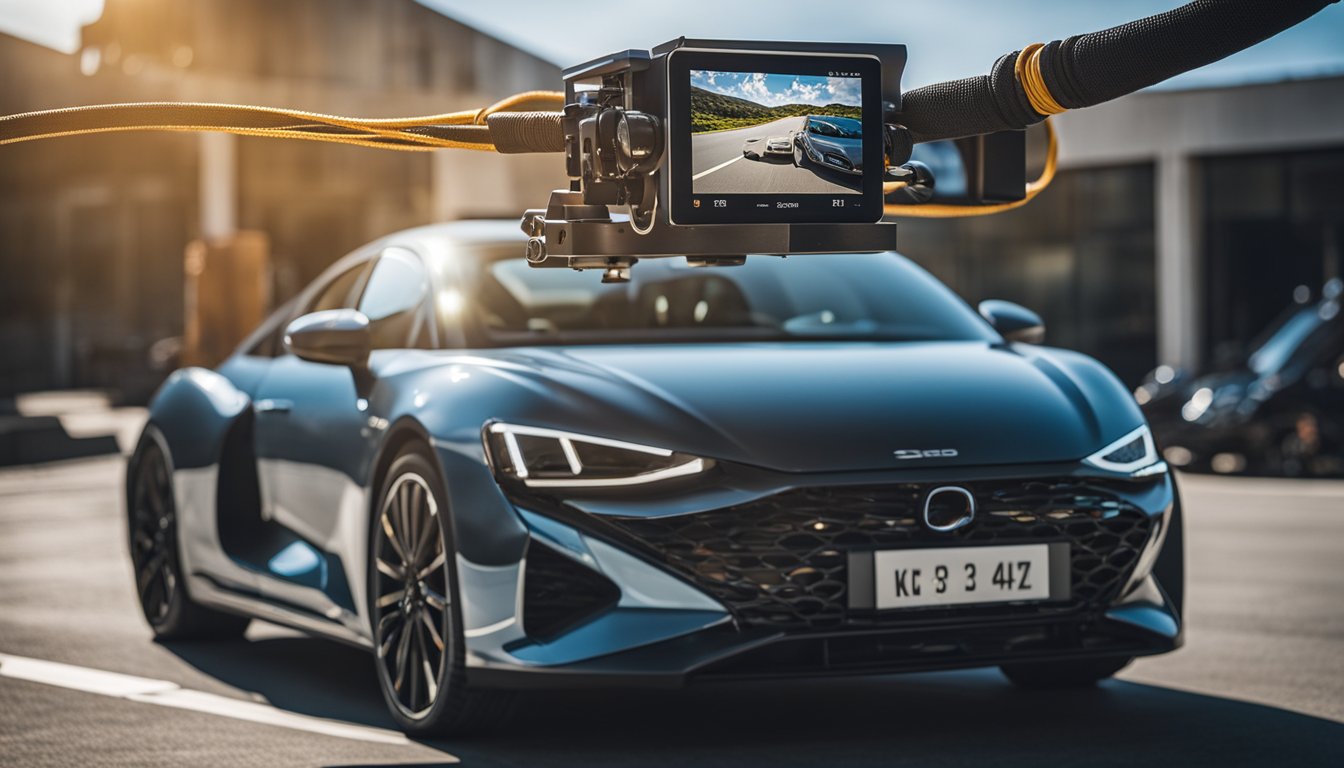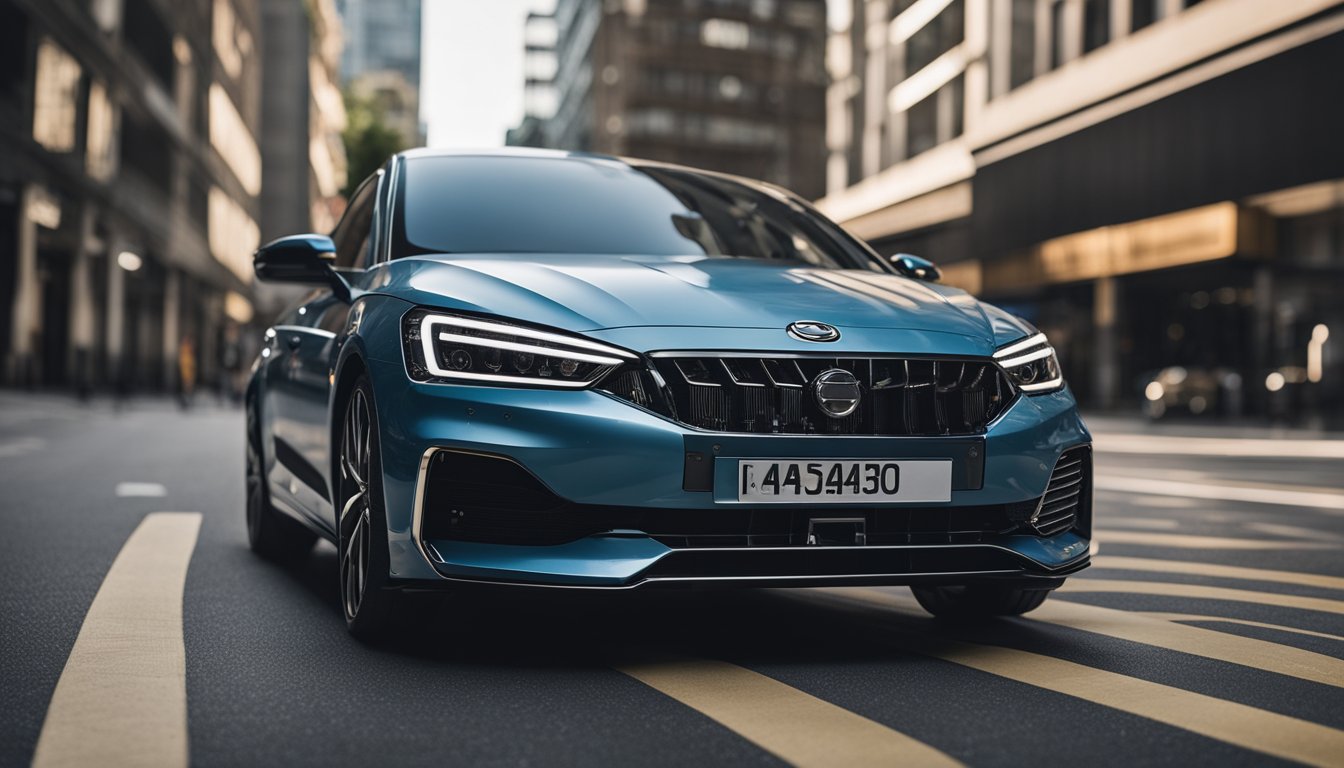If you’re looking to upgrade your car’s safety features, you may be wondering if you can add a 360 camera to your vehicle. A 360-degree camera system, also known as a surround view system, provides drivers with a bird’s-eye view of their surroundings in real-time. This technology can enhance visibility and safety, especially when parking or maneuvering in tight spaces.
Before you start shopping for a 360 camera kit, it’s important to assess your car’s compatibility. Not all vehicles are designed to accommodate aftermarket camera systems, and some may require additional modifications or professional installation. Additionally, selecting the right 360 camera kit involves considering factors such as image quality, field of view, and compatibility with your car’s existing systems.
Key Takeaways
- A 360-degree camera system can enhance visibility and safety when driving, especially when parking or maneuvering in tight spaces.
- Assessing your car’s compatibility and selecting the right camera kit are crucial steps in adding a 360 camera to your vehicle.
- The cost of adding a 360 camera to your car can vary depending on the kit you choose and the complexity of the installation process.
Understanding 360-Degree Cameras
https://www.youtube.com/watch?v=xqWkJJOcU4g&embed=true
What Is a 360-Degree Camera?
A 360-degree camera, also known as a surround view or top view camera system, is a type of camera that captures a full 360-degree view of the surroundings. It uses multiple cameras placed around the vehicle to create a bird’s-eye view image, allowing you to see all angles around your car on a single screen. This type of camera system is becoming increasingly popular in modern cars because it enhances visibility and safety, especially when parking or maneuvering in tight spaces.
Benefits of a 360 Camera System
A 360 camera system offers several benefits that make it a valuable addition to your car. Here are some of the benefits:
-
Enhanced Visibility: A 360 camera system provides a complete view of your surroundings, eliminating blind spots and making it easier to park or maneuver in tight spaces.
-
Improved Safety: With a 360 camera system, you can see obstacles and pedestrians around your car, reducing the risk of accidents and collisions.
-
Convenience: A 360 camera system makes parking and maneuvering easier, saving you time and effort.
-
Added Value: A 360 camera system is a valuable feature that can increase the resale value of your car.
Overall, a 360 camera system is a valuable addition to any car. It enhances visibility, improves safety, and makes parking and maneuvering easier.

Assessing Your Car’s Compatibility
Before you go ahead and add a 360 camera to your car, you need to assess your car’s compatibility. Not all cars are compatible with a 360 camera, and there are several factors you need to consider. In this section, we will discuss the compatibility of different car models and the electrical and software considerations you should keep in mind.
Compatibility with Different Car Models
Most cars can be retrofitted with a 360-degree camera system. However, the installation procedure may vary based on the car’s make and model. For example, some car models may require additional wiring or modifications to the existing electrical system. Therefore, it is essential to confirm compatibility before investing in a camera system for your car.
Some car models, like Audi, BMW, Mercedes-Benz, Land Rover, and Volvo, come equipped with a 360-degree camera system as a standard feature or an optional upgrade. On the other hand, car models like Chevrolet, Hyundai, Infiniti, Jaguar, Jeep, Kia, Lexus, Mazda, Mitsubishi, and Volkswagen may not come with a 360-degree camera system. In such cases, you can retrofit your car with a camera system compatible with your car’s make and model.
Electrical and Software Considerations
Adding a 360-degree camera system to your car involves electrical and software considerations. The camera system requires power to function, and the electrical system of your car must be able to handle the additional load. You may need to upgrade your car’s electrical system to support the camera system.
« Does Tesla Have 360 Camera? Exploring Tesla’s Camera Features
Vehicles with 360 Camera: A Comprehensive Guide to the Latest Models »
Moreover, the camera system requires software to process the images and display them on the screen. The software must be compatible with your car’s existing software and electronics. You may need to update your car’s software to ensure the camera system works correctly.
In conclusion, before adding a 360 camera to your car, you need to assess your car’s compatibility with the camera system. You should consider the make and model of your car, the electrical and software considerations, and whether the camera system is compatible with your car’s existing electronics.
Selecting the Right 360 Camera Kit
https://www.youtube.com/watch?v=5MvtlBYOFHg&embed=true
If you’re looking to add a 360 camera to your car, it’s important to choose the right kit. Here are some factors to consider when selecting a 360 camera kit for your car:
Aftermarket Kits vs. Automaker Options
One of the first decisions you’ll need to make is whether you want to go with an aftermarket kit or an automaker option. Aftermarket kits are generally less expensive than automaker options, but they may not be as reliable or as well-integrated into your car’s existing systems. Automaker options are typically more expensive, but they may offer better quality and more seamless integration with your car’s other features.
Camera Quality and Resolution
Another important consideration is camera quality and resolution. Higher quality cameras generally provide clearer and more detailed images, which can be especially important when using a 360 camera for safety purposes. Resolution is also important, as higher resolution cameras can capture more detail and provide a more immersive viewing experience.
When selecting a 360 camera kit, be sure to compare the quality and resolution of different options. Look for cameras with at least 1080p resolution and high-quality lenses.
Price Range
Price is also an important consideration when selecting a 360 camera kit for your car. Aftermarket kits can range from a few hundred dollars to over a thousand dollars, while automaker options can be even more expensive. Consider your budget and what features are most important to you when making your decision.
Overall, selecting the right 360 camera kit for your car requires careful consideration of factors like price, camera quality, and integration with your car’s existing systems. By taking the time to research your options and compare different kits, you can find the best option for your needs and budget.
Key Components of a 360 Camera System
Adding a 360-degree camera system to your car can enhance your driving experience by providing you with a bird’s-eye view of your surroundings. This advanced system utilizes multiple cameras placed around the vehicle to create a panoramic view of the car’s surroundings. Here are the key components of a 360 camera system:
Multiple Cameras and Their Placement
The primary component of a 360 camera system is, of course, the cameras. Typically, four cameras are installed in a 360-degree camera system, with one camera in the front, one in the rear, and two on the sides. The cameras are strategically placed to provide a complete view of the car’s surroundings.
The front camera is usually placed in the middle of the front grille, while the two side cameras are placed on the side mirrors. The rear camera is placed just above the license plate. The placement of the cameras is critical to ensure that they provide a complete view of the car’s surroundings.
Central Processing Unit and Software
The central processing unit (CPU) and software are the brains behind the 360 camera system. The CPU processes the data from the cameras and creates a panoramic view of the car’s surroundings. The software then stitches together the images from the cameras to create a seamless view of the car’s surroundings.
The 360 camera system is typically integrated with the car’s infotainment system, which displays the panoramic view on the car’s screen. The software also includes features such as parking assistance and collision avoidance, which can help you park and drive your car safely.
In conclusion, a 360 camera system is an advanced technology that can enhance your driving experience by providing you with a complete view of your surroundings. The key components of a 360 camera system are the multiple cameras and their placement, and the central processing unit and software. With a 360 camera system, you can drive your car safely and with confidence.
Installation Process
https://www.youtube.com/watch?v=gkdTFsMK8FA&embed=true
Adding a 360-degree camera to your car can enhance your driving experience by providing you with a bird’s-eye view of your surroundings. The installation process can be done through DIY installation steps or by hiring professional installation services.
DIY Installation Steps
If you’re looking to install a 360 camera in your car by yourself, you need to follow a few steps. First, you need to purchase an aftermarket kit that includes the camera and necessary wiring. Then, you need to gather the necessary tools such as a drill, screwdriver, and wire strippers.
Next, you need to set up the camera in the desired location, usually in the center of the dashboard, near the rearview mirror. You need to drill a hole in the front grille of your car to run the wiring from the camera to the display screen.
After that, you need to connect the wiring to the camera and display screen, and then calibrate the camera to ensure it’s working correctly. This process may take some time and patience, but it’s a cost-effective way to add a 360 camera to your car.
Professional Installation Services
If you’re not confident in your DIY skills, you can always hire professional installation services. These services will take care of the entire installation process for you, from setting up the camera to calibrating it.
Professional installation services can be more expensive than DIY installation, but they come with the added benefit of a warranty and professional expertise. The professionals will ensure that the camera is installed correctly and won’t damage your car’s systems.
In conclusion, whether you decide to install a 360 camera in your car by yourself or hire professional installation services, it’s important to follow the necessary steps to ensure that the camera is installed correctly and safely. By doing so, you can enhance your driving experience and have a better view of your surroundings while on the road.
Integrating with Car’s Systems
https://www.youtube.com/watch?v=B6X6bwQTTMg&embed=true
Adding a 360 camera to your car is not just about installing the cameras themselves. You also need to integrate the cameras with your car’s systems to ensure they work properly.
Connecting to the Infotainment System
One important system to integrate your 360 camera with is your car’s infotainment system. This allows you to view the camera feeds on your car’s display screen, making it easier to see what’s happening around your car.
To connect your camera to your infotainment system, you’ll need to ensure that they are compatible with each other. Some cameras come with their own display screens, while others require you to use your car’s display. You’ll also need to ensure that you have the correct cables and connectors to make the connection.
Syncing Cameras with Onboard Electronics
Another important system to integrate your 360 camera with is your car’s onboard electronics. This includes your car’s navigation system, power source, and other electronics.
To sync your cameras with your car’s electronics, you’ll need to ensure that they are compatible with each other. Some cameras require a specific power source, while others can be powered by your car’s battery. You’ll also need to ensure that your cameras are synced with your car’s navigation system so that you can see the camera feeds while you’re driving.
Overall, integrating your 360 camera with your car’s systems is an important step in ensuring that your cameras work properly. By connecting your cameras to your infotainment system and syncing them with your car’s onboard electronics, you’ll be able to see what’s happening around your car and stay safe on the road.
Calibration and Setup
https://www.youtube.com/watch?v=QsI4puDWVzw&embed=true
Once you have installed your 360 camera system in your car, it’s time to calibrate and set it up properly. This will ensure that you get the best possible image quality and coverage.
Adjusting Camera Angles
The first step in setting up your 360 camera system is to adjust the camera angles. This is important because it will determine the coverage of the camera system. You want to make sure that the camera is pointing in the right direction and that it’s capturing everything you need it to.
To adjust the camera angles, you can use the camera’s mounting bracket. Most cameras come with a mounting bracket that allows you to adjust the angle of the camera. You can also use a level to make sure that the camera is straight.
Software Calibration
Once you have adjusted the camera angles, it’s time to calibrate the camera system using the software that came with the camera. This is important because it will ensure that the camera system is working properly and that the images are clear and accurate.
The calibration process involves setting up the camera system in a specific location and then running the calibration software. The software will analyze the images captured by the camera and adjust the settings to ensure that the images are clear and accurate.
It’s important to follow the instructions provided with the camera system when calibrating the camera. This will ensure that you get the best possible results and that the camera system is working properly.
In conclusion, calibrating and setting up your 360 camera system is an important step in ensuring that you get the best possible image quality and coverage. By adjusting the camera angles and using the calibration software, you can ensure that your camera system is working properly and that you get the best possible results.
Operational Guidance
https://www.youtube.com/watch?v=sSP7rJq9cJg&embed=true
Using the 360 Camera During Parking
Having a 360-degree camera installed in your car can be a great addition when it comes to parking. With a 360 camera, you can get a full view of your surroundings, making it easier for you to park your car in tight spaces.
When using the 360 camera during parking, it is important to keep in mind that the camera is just one of the tools at your disposal. You should still use your mirrors and look around you to ensure that you are not hitting anything or anyone. The camera is there to supplement your vision, not replace it.
One helpful tip when using the 360 camera for parking is to use the parking sensors or parking assistance features that may come with your car. These features can help you identify the distance between your car and other objects, making it easier for you to park safely.
Navigating Blind Spots and Traffic
Another benefit of having a 360-degree camera in your car is that it can help you navigate blind spots and traffic. Blind spots can be a major safety concern, but with a 360 camera, you can get a full view of your surroundings, reducing the risk of an accident.
When driving in traffic, the 360 camera can also be helpful in identifying potential hazards. With the camera, you can see what is happening around you, making it easier for you to react to any sudden changes in traffic.
It is important to note that while the 360 camera can be a helpful tool, it is not a substitute for safe driving practices. You should still be vigilant and aware of your surroundings at all times.
In conclusion, having a 360-degree camera in your car can be a great addition when it comes to parking and navigating blind spots and traffic. However, it is important to remember that the camera is just one of the tools at your disposal and should not replace safe driving practices.
Maintaining Your 360 Camera System
Once you’ve installed a 360 camera system in your car, it’s important to keep it functioning properly. Here are some tips for maintaining your 360 camera system:
Troubleshooting Common Issues
If you’re experiencing issues with your 360 camera system, there are a few things you can try to troubleshoot the problem. First, check the camera’s wiring and connections to ensure they’re secure. If the camera still isn’t working properly, try resetting the system by disconnecting the power source for a few minutes before reconnecting it.
Another common issue is poor image quality. If you’re experiencing blurry or distorted images, make sure the camera lenses are clean and free of debris. You can use a microfiber cloth and lens cleaner to gently wipe the lenses clean.
Regular Maintenance and Upkeep
To keep your 360 camera system functioning properly, it’s important to perform regular maintenance and upkeep. This includes keeping the camera lenses clean, checking the wiring and connections for any signs of wear or damage, and ensuring the power source is functioning properly.
You should also check the camera’s functionality on a regular basis to ensure it’s working properly. This can be done by testing the camera in different lighting conditions and checking the image quality. If you notice any issues, address them promptly to prevent further damage or malfunction.
By following these tips for maintaining your 360 camera system, you can ensure it continues to function properly and provide you with the added safety and security you need while driving.
Cost Consideration
When it comes to adding a 360 camera to your car, cost is an important factor to consider. In this section, we will evaluate the price range of 360 cameras and discuss the warranty and long-term value of your investment.
Evaluating the Price Range
The price range for 360 cameras can vary depending on the brand, features, and quality. On average, you can expect to pay between $100 to $500 for a reliable 360 camera. Keep in mind that the higher-priced cameras may come with additional features such as night vision, higher resolution, and larger viewing angles.
Before making a purchase, it’s important to evaluate your budget and needs. If you’re on a tight budget, you may want to consider a basic 360 camera with fewer features. However, if you’re looking for a camera with advanced features, you may need to invest more money.
Warranty and Long-Term Value
When purchasing a 360 camera, it’s important to consider the warranty and long-term value of your investment. Look for a camera with a warranty that covers manufacturing defects and malfunctions. Additionally, consider the long-term value of your investment. Will the camera be compatible with future car models? Will it continue to receive updates and support from the manufacturer?
Keep in mind that a 360 camera is an investment in your safety and the safety of others on the road. While it may be tempting to opt for a cheaper camera, investing in a quality camera with a good warranty and long-term value can save you money in the long run.
Advantages for Specific Car Models
If you’re looking to upgrade your car with a 360-degree camera, you might be wondering if it’s worth the investment. Here are some advantages for specific car models that can help you make an informed decision.
Luxury Cars and Advanced Systems
Luxury car brands like BMW, Mercedes, and Land Rover often come equipped with advanced camera systems that provide a 360-degree view of the car’s surroundings. These systems use multiple cameras placed around the car to create a bird’s-eye view of the car, making it easier to park and maneuver in tight spaces.
If you own a luxury car with an advanced camera system, upgrading to a 360-degree camera might not be necessary. However, if you’re looking to add an extra layer of safety and visibility, a 360-degree camera can be a great addition to your car.
Upgrading Older Car Models
If you own an older car model that doesn’t come equipped with a 360-degree camera system, upgrading to one can provide many benefits. For example, adding a 360-degree camera to your Toyota RAV4 or Highlander can make parking and maneuvering in tight spaces much easier.
Similarly, if you own an older car model from Ford or Audi, adding a 360-degree camera can be a great way to upgrade your car’s safety features. With a 360-degree camera, you’ll have a better view of your surroundings, making it easier to avoid collisions and other hazards on the road.
Overall, adding a 360-degree camera to your car can provide many benefits, regardless of the make and model of your car. However, it’s important to choose a camera system that’s compatible with your car and provides the features you need.
Frequently Asked Questions
https://www.youtube.com/watch?v=fdDZaH8hg1A&embed=true
How do I install an aftermarket 360-degree camera in my car?
Installing an aftermarket 360-degree camera in your car can be a bit tricky, but it is not impossible. You will need to choose a compatible camera and prepare the required tools before starting the installation process. It is recommended to follow a methodical approach while integrating the camera with your car’s systems. For a step-by-step guide on how to install a 360 camera in your car, check out this helpful article.
Which new car models come equipped with a 360-degree camera?
As of 2023, most car manufacturers offer some form of a 360-degree camera system in their new models. Some of the popular car brands that offer this feature include Acura, Audi, BMW, Buick, Cadillac, Chevrolet, Ford, Honda, Hyundai, Kia, Lexus, Mercedes-Benz, Nissan, Subaru, Tesla, Toyota, and Volvo. It is always a good idea to check with your local dealership to see which models come equipped with this feature.
What are the benefits of having a 360-degree camera in a vehicle?
Having a 360-degree camera in your vehicle can enhance your driving experience in many ways. It can provide a comprehensive view of your surroundings, making it easier to park, maneuver in tight spaces, and avoid collisions. It can also improve your safety by alerting you to potential hazards and blind spots. Additionally, it can increase the resale value of your car.
Are there any affordable used cars that have a 360 camera feature?
Yes, there are some affordable used cars that come equipped with a 360 camera feature. Some of the popular models include the Nissan Rogue, Kia Optima, Hyundai Sonata, and Ford Fusion. However, the availability of this feature in used cars may vary depending on the year, make, and model. It is always a good idea to do your research before making a purchase.
What is the average cost of installing a 360-degree camera system in a car?
The cost of installing a 360-degree camera system in a car can vary depending on several factors, such as the type of camera, the car model, and the installation method. On average, the cost can range from $200 to $1,000 or more. It is recommended to get a quote from a professional installer to get an accurate estimate.
Can a Birdseye view camera be retrofitted into an existing vehicle?
Yes, a birdseye view camera can be retrofitted into an existing vehicle. However, the process can be complicated and may require modifications to the car’s electrical system. It is recommended to consult with a professional installer to determine if your car is compatible with this feature and to get an accurate estimate for the installation cost.













